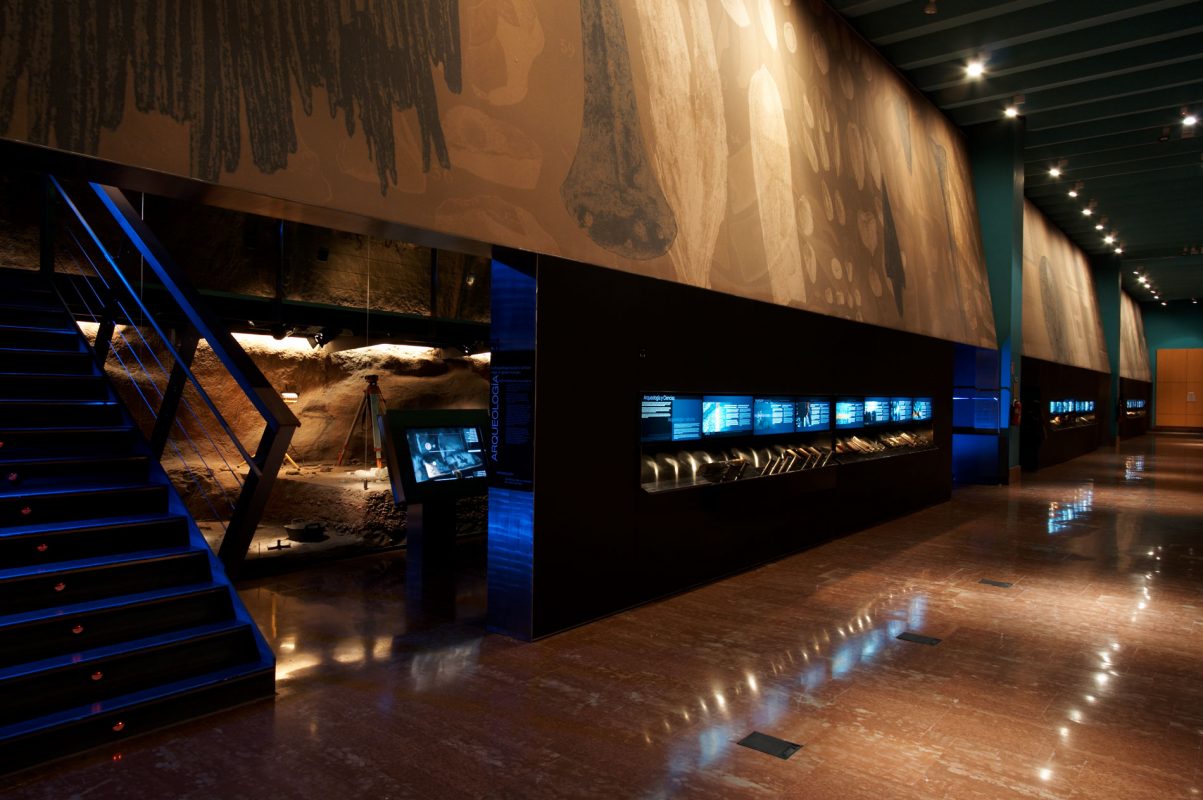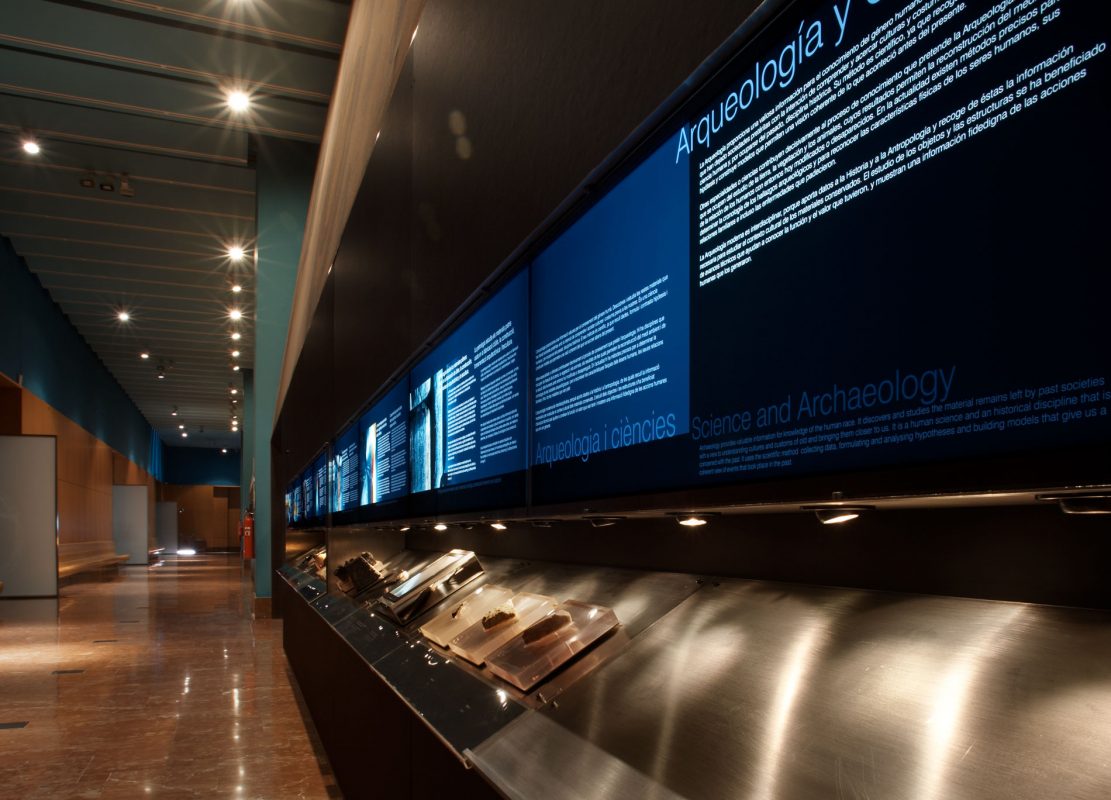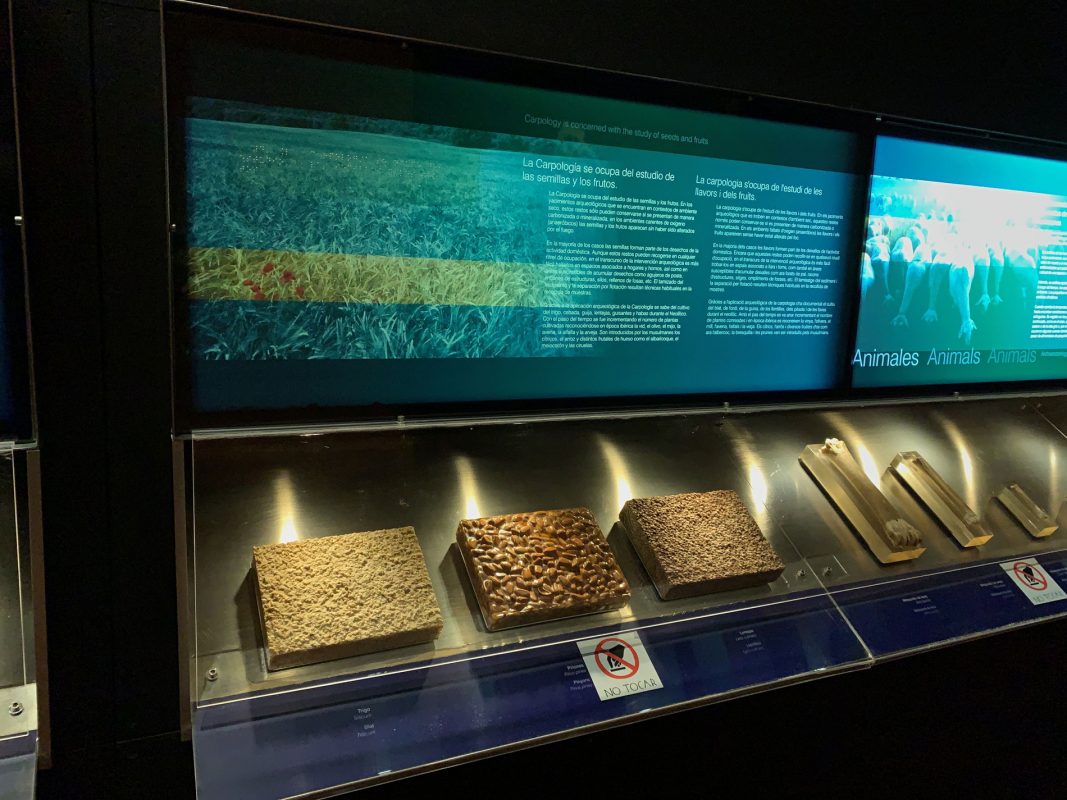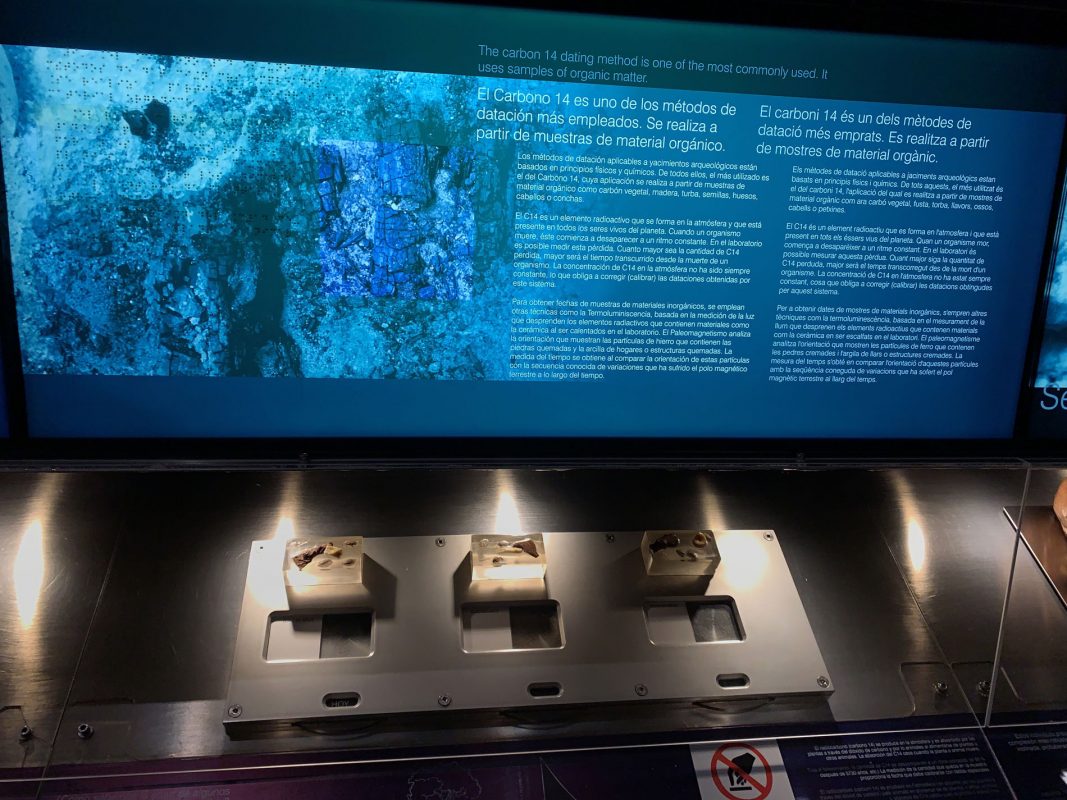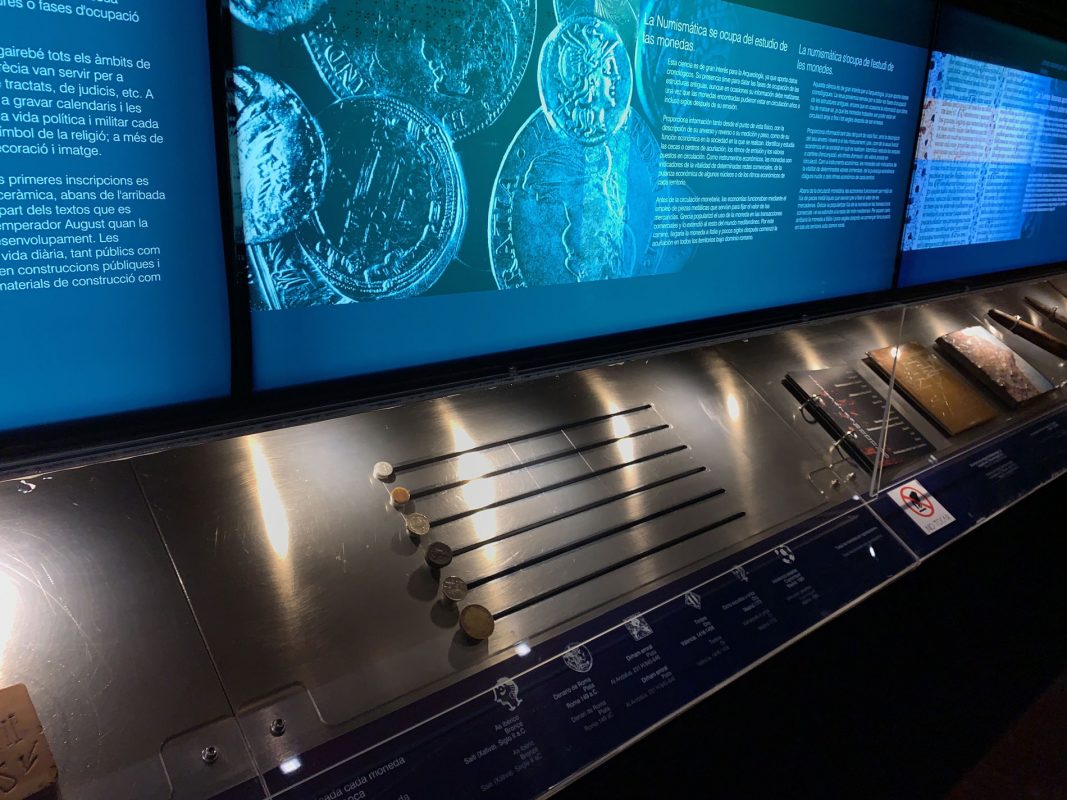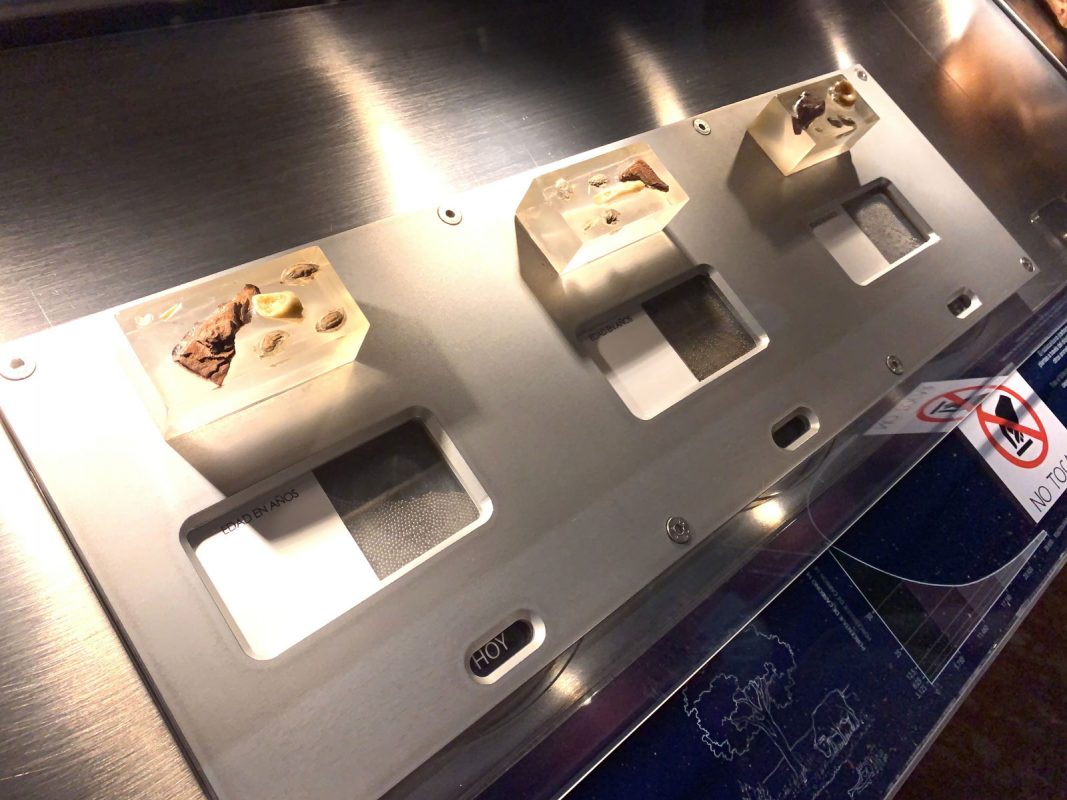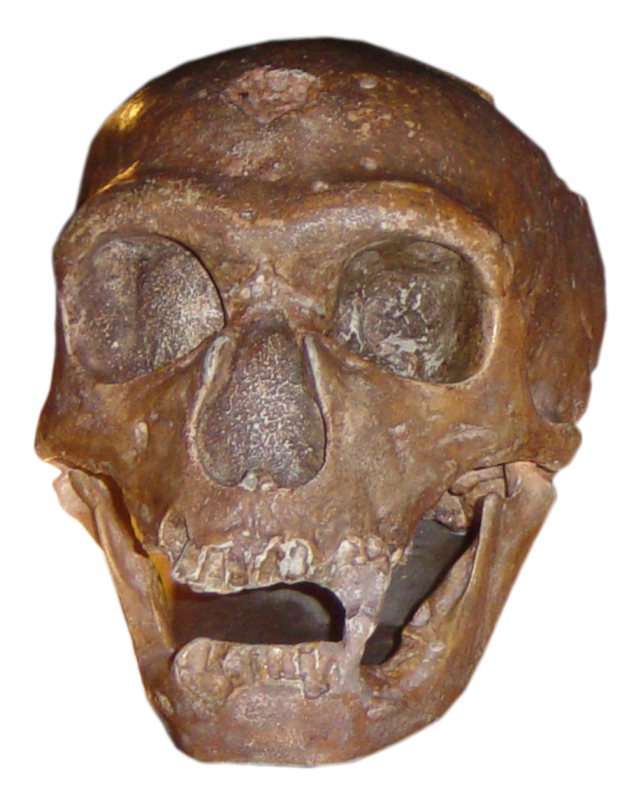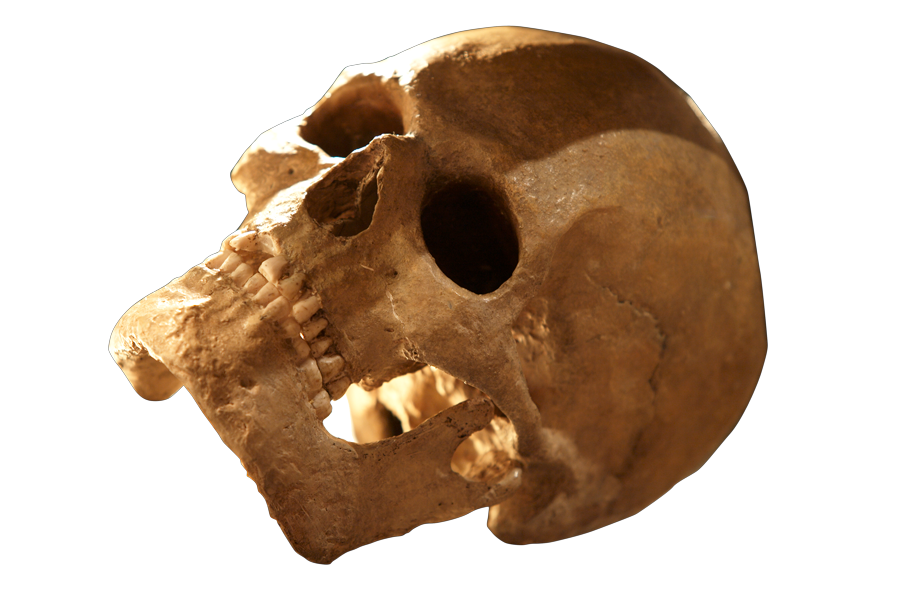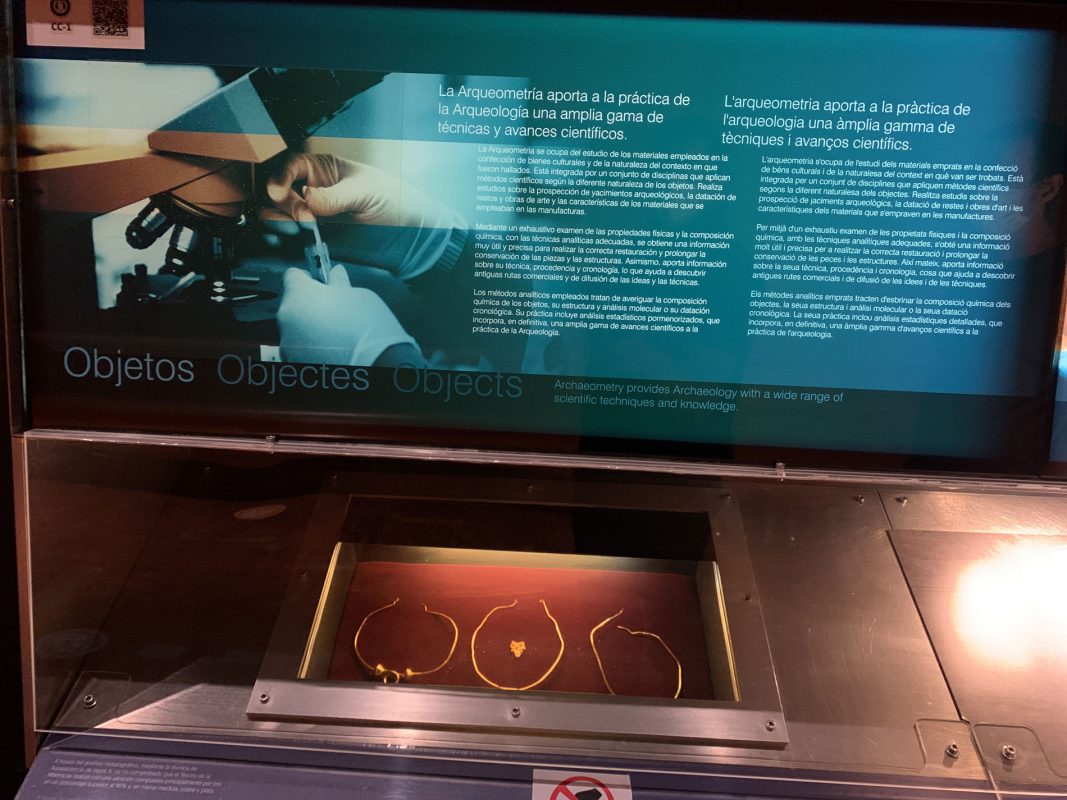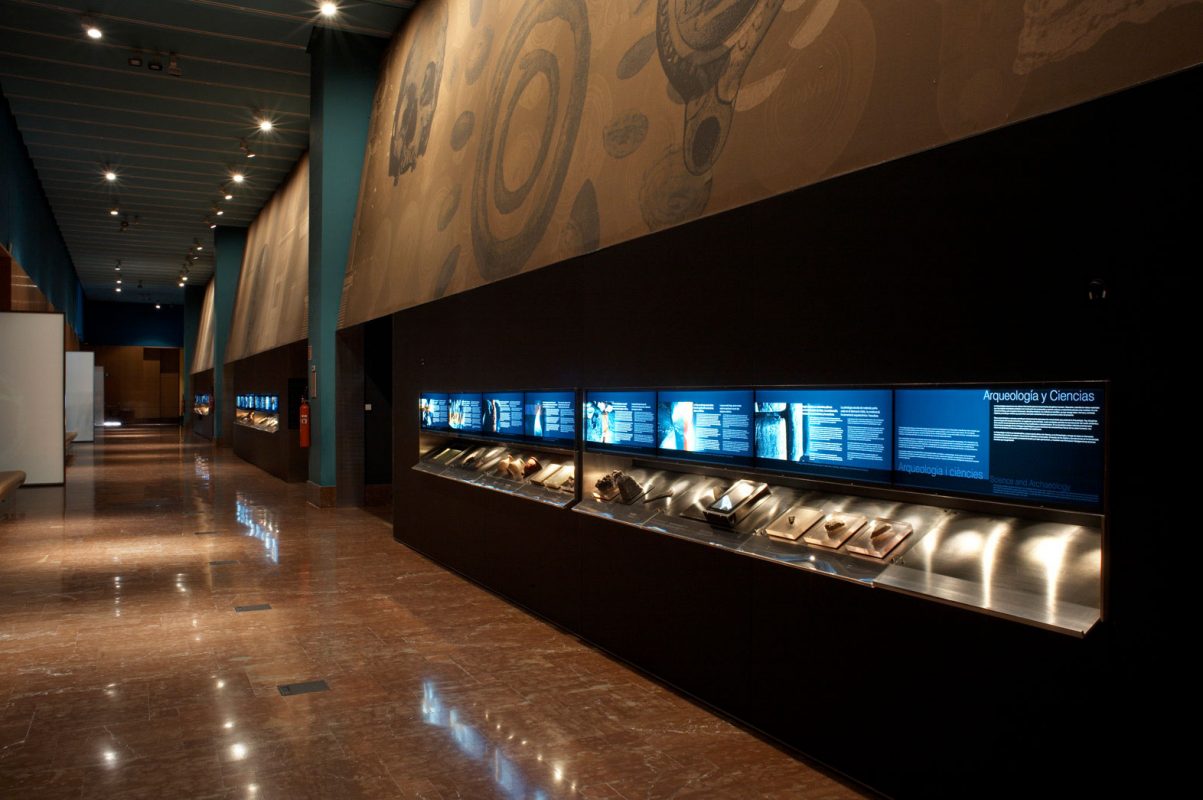MARQ and its Thematic Galleries
EDUCATIONAL PANELS
The amount of material found on archaeological sites can be very large and varied. Archaeologists cannot know everything about such diverse subjects as zoology, geology or chemistry. They need help from other specialists in order to find out as much information as possible.
The main corridor of the museum is divided into three sections with text panels that explain the auxiliary sciences of archaeology.
FIRST INTERACTIVE AREA
The “Environmental Sciences” are grouped together and provide information about the environment and climate in the past.
- Sedimentology: This is the study of soil and geological sediments that are deposited on archaeological sites. They provide valuable information about natural phenomena, for example, ancient climate.
- Palynology: This is the study of pollen remains that are preserved in archaeological layers. They help to identify what vegetation existed when the area was occupied. A microscope, like the ones here, is needed to analyse the pollen.
- Carpology: This is the study of the remains of preserved (normally carbonized) fruit and seeds. These remains can help us know, for example, what types of vegetables and fruit people ate in the past.
- Anthracology: This is the analysis of charcoal remains. It helps identify the types of wood that were being used by people and provides us with information on past vegetation.
- Malacology: This is the study of mollusks – marine and terrestrial (snails) shells that are found on archaeological sites. They provide us with information about past environments and climate.
- Zooarchaeology: This is the study of animal remains found on archaeological sites. It not only provides information on the fauna of a certain period, but also provides information about human activities (eg hunting, fishing, raising cattle) and diet.
DENDROCHRONOLOGY
This is a scientific method based on the dating of growth rings of tree trunks. A new ring is formed each year, and the width of the ring depends on environmental conditions (temperature, rain, etc..). An old tree has many rings. The same species of tree growing in the same area will have similar width rings. If we have trees from different periods in the same region, we can create a continuous time sequence from the present to the past. Therefore, if we find a large piece of wood that has its rings, we can compare this to the sequence and be able to date when the tree was cut down and then used.
In the following example, a piece of wood from a Roman site is being dated. Follow the sequence and see how this is done. This is not a real example as it has been deliberately exaggerated to show clearly how this dating method works. In real examples, many more samples of wood are needed to be able to create a long sequence of dates that go far back into the past.
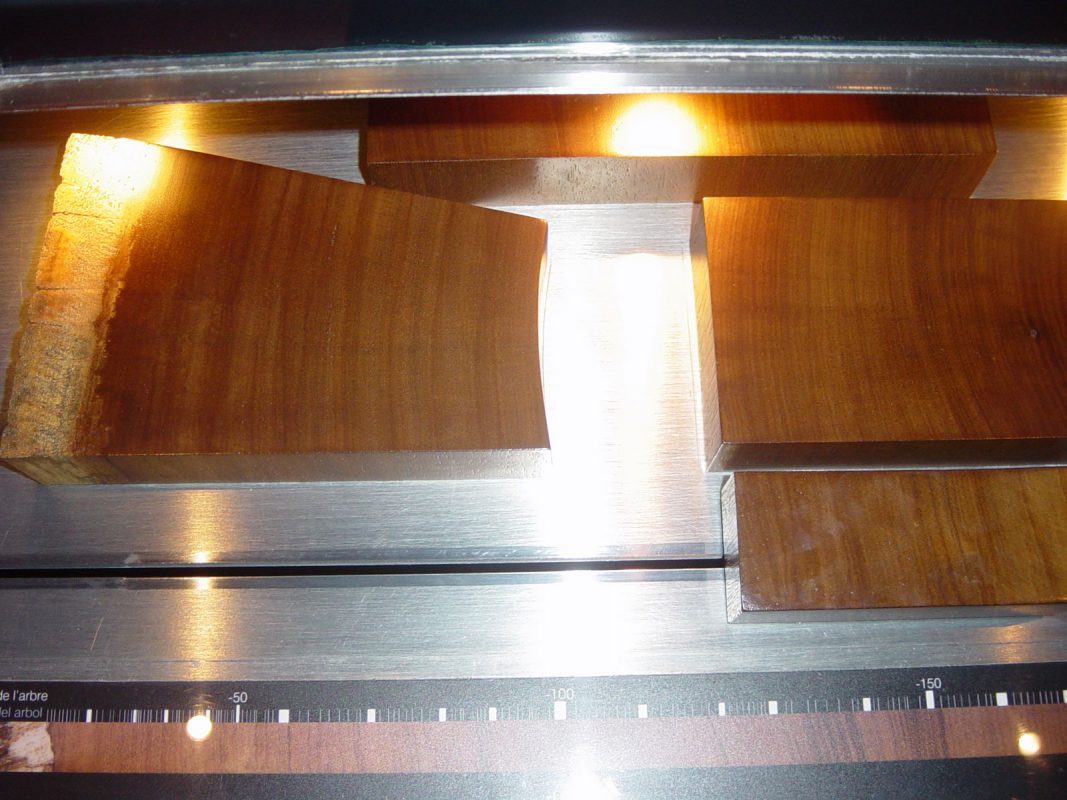



 Español
Español VAL
VAL